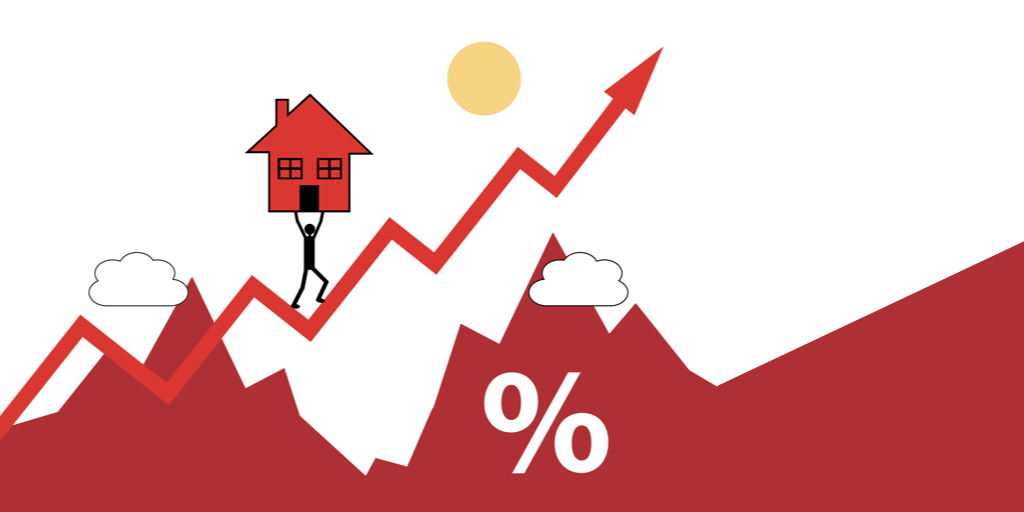All the stimulus checks, the virtually free PPP money, and quantitative easing is coming to an end and at great cost. That cost is called inflation and older Americans and retirees are often its unseen casualties. While retirees are not prone to shout loudly while protesting en masse on the streets, they are nonetheless bearing the brunt of rising costs triggered by monetary policy and lingering supply chain interruptions in the wake of the Covid pandemic.
Typical retirement and budget planning are built around an assumed 3 percent annual inflation rate. Today annually-adjusted inflation is nearly three times higher hovering just below 9 percent. This means even those who diligently saved and invested in a diversified investment portfolio are at risk.
Bloomberg Law reports that surging inflation will likely lead to…
Read More
an increase in maximum annual retirement contributions in 2023 for qualified plans like 401(k), 403(b), and 457 plans. That’s great for workers nearing retirement but with inflation eating more of the dollars a voluntary increase in contributions seems unlikely. Reduced contributions are more likely. “My concern is that the longer high inflation goes on, and the harder it is for these people to make ends meet, they—if they don’t quit contributing altogether—will reduce their contribution”, says National Association of Plan Advisors President Corby Dall, a Sandy, Utah-based advisor at OneDigital Retirement + Wealth. Inflation also exacts a psychological cost. “These are seriously challenging times, and they seem to be taking a toll on the American worker and their belief about achieving a comfortable retirement,” says Joel Schiffman, head of intermediary distribution for North America at Schroders. “This year, inflation is the number one concern Americans have about their retirement, and next year, it may be something else.” Consequently, confidence in the American dream of retirement is receding. Of those approaching their planned retirement, only 22% aged 60-67 believe they’ve saved enough, a reduction from 26% who felt prepared in 2021. This leaves most having to weigh the options of continuing to work, attempting to increase their retirement contributions, or possibly tapping other assets including their home’s value. The consequences of inflation are especially destructive early in retirement, a topic Wade Pfau discussed in Morningstar’s recent podcast The Long View. Pfau noted it can be argued there’s a sequence of returns risk when inflation spikes early in one’s retirement. “because if there’s a 10% inflation rate in the first year of retirement and then it gets back to normal afterward, say, you’ve permanently raised every future expense — every future year of spending has been impacted by that first-year inflation rate. So, it would have a bigger impact on the retirement plan compared to, say, staying maybe 20 years into retirement.” One saving grace is right over the head of retirees- their home’s accumulated equity. With home price growth outpacing stock market returns since the pandemic, it’s a viable option. The question is how many will finally look to their largest asset as an inflation hedge? Retirees Are Inflation’s Hidden Victims. Here’s How They Can Protect Themselves (Newsweek) Will Americans be living the dream — or a nightmare — in retirement? (Benefits Pro) Inflation Driving Up 2023 Retirement Plan Contribution LimitsAdditional reading:










3 Comments
One of the major issues for senior homeowners, is that inflation in and of itself does not drive up home values especially in times of rising interest rates. So when we look to the home to protect us against the ravages of inflation, aren’t we subjecting home equity to a multiplier effect from inflation and rising interest rates by asking it to take on the ravages of inflation that we experience in other products?
For example, home values may drop 10% because of an over stimulated economy plus increased interest rates induced by the Fed. If in that environment, a HECM is originated, the equity drops just from the HECM’s upfront costs. Now add in draws to help alleviate the negative impact of inflation on the consumer’s cash flow and suddenly home equity is hit on two fronts. So let us say that the value of the home is $800,000 and its equity is $600,000. Prices drop 10% so that the value of the home is now $720,000 and its equity just $520,000. Let us assume that the upfront costs of a HECM are $26,000 which brings down equity to under $500,000 (or $494,000). The homeowner decides to take $600 per month to avoid harming his life style for the next year which ends when the home’s value is $720,000.
So what has happened to the home? Its value has gone from $800,0000 to just $720,000 for a $80,000 loss. Home equity has on the other hand gone from $600,000 to just $486,800 for a reduction of $113,200. So not only has home equity borne the $80,000 in lost home value but also $26,000 in financed upfront HECM costs and an additional $7,200 in costs from inflation transferred from avoiding a diminished lifestyle to lowering home equity. So are we asking home equity to carry an excess amount of the costs of inflation?
But is that the full cost of this strategy and the answer is a resounding “NO.” HIDDEN in the costs just identified are the future costs of interest and MIP on $33,200. We may not view that as all that important but in 25 years the UPB will grow by an additional $82,379 (assuming an adjustable rate HECM with and an average effective interest rate of 4.5% plus the 0.5% for ongoing MIP). That makes the total future cash outflow from using that strategy over $115,000 while the senior only received $7,200 in additional cash inflow 25 years before.
While we like to tell the financial planning community (particularly CFPs) that their fiduciary responsibility to their clients includes bringing home wealth into financial planning (an outright falsehood), do we take on the reasonable and rational ethical duty to tell the person we are trying to sell this strategy to that $7,200 in additional cash inflow today will result in over $115,000 cash outflow in the future (assuming that at termination of the HECM after 25 years there will be positive home equity).
James
I have read your comments here and on RM Daily during the 13 years I have been originating RM loans. Your math and writing skills are to be much admired. In this analysis though, I put on my ever optimistic other license hat, a real estate broker’s license and 22 years selling real estate experience prior to falling in love with the RM loan product and off I went helping seniors to a more comfortable retirement. In the analysis above there was no mention that the home value during the time span you frame could just as equally increase again thus leaving the reverse mortgaged homeowner with a much rosier equity picture than projected. I hope you keep on writing, I like reading your comments, although I may not always I agree, they are good food for thought.
Shawna,
Optimism, like pessimism, is a luxury few competent tax advisers can embrace. My goal is to be a realistic pragmatist.
This year I have reached 34 years of experience as a CA DRE (California Department of Real Estate) licensee, 30 years of which is as a CA DRE licensed broker. However, 4 of the 8 courses in qualifying to take the CA DRE broker’s exam were in commercial real estate related courses taken at USC’s graduate school of finance. While you got your license to provide real estate selling services, I got mine to more effectively serve our CPA firm’s land developer clients.
The reason I present a falling home value environment is that I don’t recollect an economic situation like the one we face today (where mortgage interest rates climbed rapidly and inflation still looms) where home values did not fall nationally. Such was the case in the Carter Administration and the early years of the Reagan Administration some 40 years ago.
In looking at buying another home, I am seeing even California offer prices being reduced throughout LA and Orange Counties and those counties surrounding them. A close friend in Texas called this week claiming their home prices were still rising. I did a little research and found that home values in the largest cities in Texas were estimated to have fallen by at least 3% already.
So while optimism may demand looking at this problem in the light of rising home values, realistic pragmatism demands looking at the situation as it most likely will turn out to be (within the context of high inflation with higher mortgage interest rates) one of falling home values. Economists tell us that the last time this type of situation existed was 40 years ago, about a decade before the first HECM was endorsed.
If you can provide US historic data within the last seventy years that support optimism, please do so. I would like to promote your view but have not seen the facts that allow me to do so.
To say the least the industry is better because of those like you who express a reasoned and rational view even if it is in conflict with mine own.